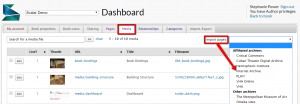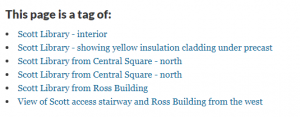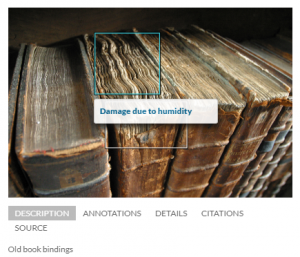Content types are accessed by tabs in the Dashboard. A Scalar project is comprised of six content types. Each of these content types is treated as a single ‘page’ within a project. This enables the author to mix different content types to create a unique structure for her/his project, since each of the 6 content types can be connected to another. Content types can be imported, viewed, edited, and deleted in the Dashboard.
WHERE TO FIND CONTENT TYPES
The different types of content can be accessed from the Dashboard.
CONTENT TYPES
Pages
There are two ways to create pages in Scalar, through the Dashboard or via the book. From the Dashboard, create a page by clicking the Pages tab and clicking the Create new page button on the far right. Read more on creating pages in the next chapter.

Media
Scalar allows you to add many different types of media from various sources. From the Media tab, you can “Import pages” via the drop-down menu at the far right — meaning you can search through a wide variety of online archives, repositories, or even your own hard drive. Details on importing media will be covered in future chapters.

Relationships (4 types):
- Paths: “A path is a linear sequence of content. You can turn any page or media file into a path simply by specifying the pieces of content it contains and their order. Any time you want your reader to experience content in a specific order, use a path” (Scalar). The example below shows a main path with several other nested paths.

- Tags: Tags are non-linear groupings of content. They can be used to create connections between items, but are also their own piece of content.

- Annotations: Annotations can be used to highlight certain aspects of a media object. The example below uses annotations to call attention to the type of damage of the book in the photo.

- Comments: A comment is content which is explicitly identified as a response to other content.


